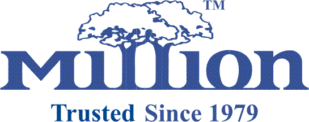3 minutes read
UV flatbed printing and traditional digital printing are two common methods used in the printing industry. While both processes involve digital printing technology, there are significant differences between them:
UV Flatbed Printing
1. Printing Method
UV flatbed printing uses ultraviolet (UV) curable inks that are applied directly onto the printing surface. The printing head moves horizontally and vertically across the stationary printing substrate. The UV inks are then instantly cured or dried using UV light exposure.
2. Substrate Versatility
UV flatbed printing offers versatility in terms of printing on a wide range of substrates, including rigid materials like wood, glass, metal, acrylic, and PVC, as well as flexible materials like vinyl and fabrics. This is possible because the UV inks adhere well to various surfaces.
3. Direct-to-Substrate Printing
With UV flatbed printing, it is possible to print directly onto the substrate without the need for any intermediate steps, such as using transfer paper or heat presses. This direct-to-substrate feature saves time and eliminates potential issues related to image transfers.
4. Durability
UV inks used in flatbed printing are highly durable, providing increased resistance to scratching, fading, and weathering. The cured inks create a solid and vibrant image that can withstand outdoor conditions.
Traditional Digital Printing
1. Printing Method
Traditional digital printing, also known as roll-to-roll or flatbed printing, utilizes a printing substrate that moves continuously through the printing process. Inkjet technology is commonly used, where the print heads deposit ink onto the moving substrate.
2. Substrate Limitations
Traditional digital printing is typically limited to flexible materials like paper, vinyl, fabric, and similar substrates. Rigid materials may not be compatible or may require additional processing steps for printing.
3. Printing Size
Traditional digital printing machines are often designed to handle large-format printing, allowing for the production of large-scale signage, banners, and posters. However, printing on smaller sizes is also possible.
4. Image Quality
Traditional digital printing generally offers high-resolution prints with precise color reproduction. The print heads deposit tiny droplets of ink onto the substrate, resulting in sharp and detailed images.
5. Cost-Effectiveness
Traditional digital printing can be a more cost-effective option for high-volume printing, as the process is typically faster and more streamlined.
In summary, UV flatbed printing offers versatility in printing on various substrates, including both rigid and flexible materials, and provides durable, vibrant output. Traditional digital printing is suitable for flexible materials, particularly for large-format printing, and can be a cost-effective option for high-volume jobs. The choice between the two methods depends on the specific printing requirements, substrate types, and desired outcomes.
Read More
PROCESSES
- Create Professional Print-Ready Files Easily: Solve Your Printing Woes Now!
- Which printing method offer the better colour fastness, Digital or Screen Print?
- Decide: Engrave or Print? A Guide to Making the Right Choice

